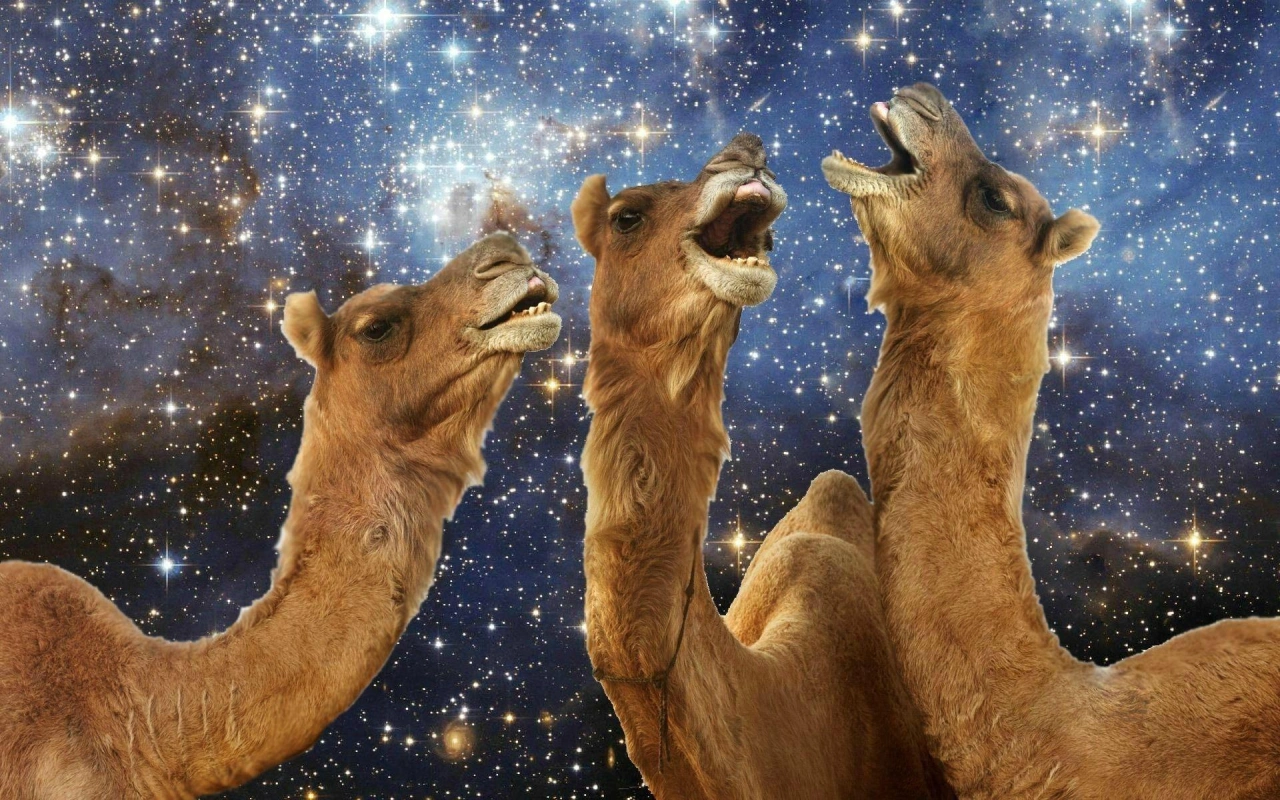The Agile wallaby (Macropus agilis) is a small to medium-sized marsupial found in northern and eastern Australia, including Tasmania. They are known for their agility and ability to jump up to three times their body length.
Agile wallabies are primarily herbivores and have a unique digestive system that allows them to extract maximum nutrition from their food.
They are social animals that may live in groups called mobs, and they communicate with each other through a variety of vocalizations and body language.
While they are not currently considered endangered, they may be impacted by habitat loss and fragmentation, as well as hunting and predation by introduced species.
| Category | Details |
|---|---|
| Kingdom | Animalia |
| Phylum | Chordata |
| Class | Mammalia |
| Infraclass | Marsupialia |
| Order | Diprotodontia |
| Family | Macropodidae |
| Genus | Macropus |
| Species | Macropus agilis |
| Niche | Herbivorous marsupial, important prey and seed disperser |
| Length | Up to 3.3 ft (1 m) |
| Weight | 18-30 lbs (8-13.5 kg) |
| Lifespan | Up to 9-12 years in the wild |
| Social Structure | Social, living in groups of up to 50 individuals |
| Conservation | Least Concern (IUCN Red List) |
| Preferred Habitat | Grasslands, savannas, woodlands, and forests |
| Average Offspring | 1 joey per year |
| Main Food Items | Grasses, herbs, and shrubs |
| Predators | Dingoes, feral cats, and foxes |
Agile wallaby Anatomy and Physical Characteristics
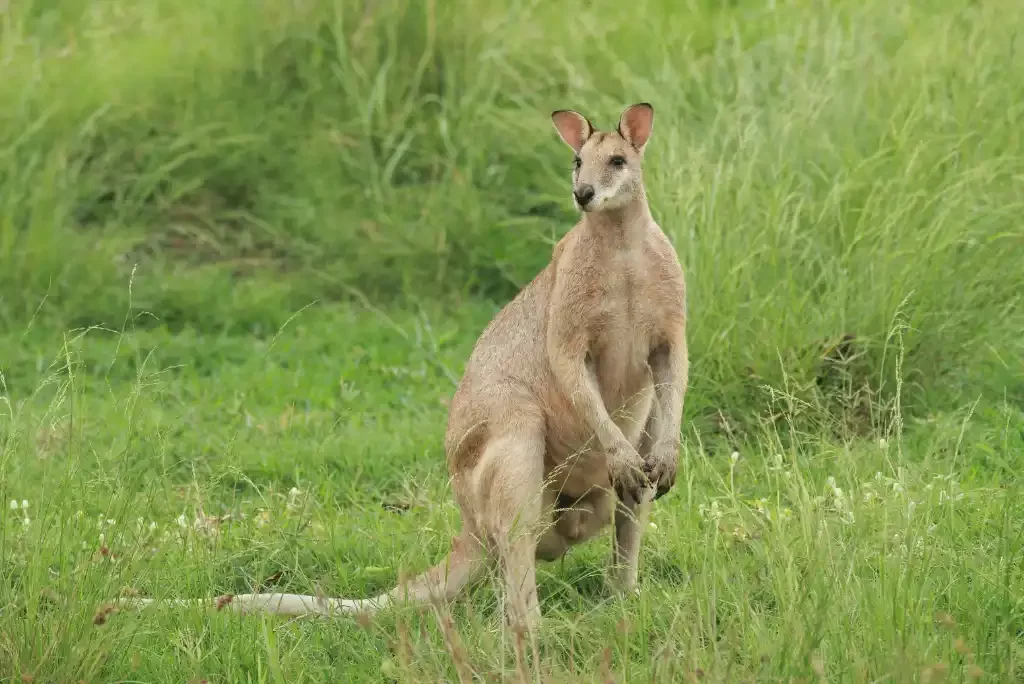
The Agile wallaby (Macropus agilis) is a medium-sized marsupial found in the northern and eastern parts of Australia, including Tasmania. Here are some of the physical characteristics and anatomical features of the Agile wallaby:
Size
The Agile wallaby is smaller in comparison to many other wallaby species, showcasing its unique physical characteristics. With a head and body length of up to 85 cm (33 inches), it falls on the compact side of the wallaby size spectrum.
In terms of weight, it can reach up to 27 kg (60 lbs), making it a medium-sized marsupial. Despite its relatively smaller stature, the Agile wallaby possesses remarkable agility and adaptability, which allows it to thrive in its diverse habitats.
Fur
The Agile wallaby boasts a thick, luxurious coat of fur that serves as both protection and insulation. Its fur is predominantly grayish-brown in color, providing effective camouflage in the grassy and forested regions it calls home.
This natural coloring allows the wallaby to blend seamlessly with its surroundings, reducing the risk of detection by potential predators. Additionally, the Agile wallaby’s belly and legs tend to be lighter in color, creating a subtle contrast in its overall appearance.
Tail
One of the distinguishing features of the Agile wallaby, like other wallabies, is its remarkable tail. This appendage is long and muscular, aiding the wallaby in maintaining balance while navigating its environment. The tail also serves as a propulsive tool, assisting the Agile wallaby in swift and efficient movement.
By leveraging its powerful tail, the Agile wallaby can make quick turns, sudden leaps, and precise landings, further enhancing its agility and enabling it to navigate challenging terrains with ease.
Limbs
The Agile wallaby’s limbs are specifically adapted to support its distinctive locomotion. Its hind legs, in particular, are robust and muscular, providing the necessary power to execute impressive jumps and rapid sprints.
These well-developed hind limbs enable the Agile wallaby to traverse uneven and rugged terrains, ensuring its survival even in the face of obstacles. In contrast, the front legs of the Agile wallaby are shorter and less powerful, primarily used for stabilization during movement rather than propulsion.
Teeth
Equipped with a formidable set of sharp teeth, the Agile wallaby possesses the necessary tools for tearing and chewing tough plant materials. Its dental adaptations are essential for effectively consuming its herbivorous diet, which consists of various grasses, shrubs, and vegetation.
The Agile wallaby’s teeth enable it to break down fibrous plant matter, extracting the maximum nutritional value from its food sources. This adaptation ensures that the wallaby can meet its dietary requirements and thrive in its natural habitat.
Eyes
The Agile wallaby possesses large, expressive eyes that are strategically positioned high on its head. This unique placement grants the wallaby a wide field of vision, allowing it to be vigilant and aware of its surroundings.
The keen eyesight of the Agile wallaby aids in detecting potential threats, such as predators or other dangers, from afar. With its sharp visual acuity, it can swiftly react to any signs of danger, ensuring its safety and survival.
Ears
The Agile wallaby possesses long, pointed ears that serve as another crucial sensory adaptation. These ears are highly mobile and capable of swiveling in different directions, enabling the wallaby to detect sounds with exceptional precision.
By employing its acute hearing, the Agile wallaby can pinpoint the location of potential threats or nearby food sources. This heightened auditory awareness contributes to the wallaby’s overall alertness and enhances its ability to respond appropriately to its environment.
Pouch
As a marsupial, the Agile wallaby exhibits the characteristic pouch that is emblematic of its reproductive biology. The female Agile wallaby possesses a pouch in which she carries and nurses her young, known as joeys.
This remarkable adaptation allows the wallaby to protect and nurture its offspring, providing them with a safe and nurturing environment.
The pouch serves as a natural incubator, ensuring the development and growth of the joey until it reaches a more independent stage of life. The joey remains within the pouch for approximately 8 months, receiving vital nutrients and continuous care from its mother.
Diet
The Agile wallaby is a herbivorous marsupial, relying on a diverse range of plant materials for sustenance. Its diet consists primarily of various grasses, including both short and tall species, which serve as a major component of its nutritional intake. Additionally, the Agile wallaby consumes a variety of shrubs, leaves, shoots, and fruits when available.
Its feeding habits are adaptable, allowing it to exploit the vegetation resources present in its habitat. The wallaby’s specialized digestive system enables it to efficiently process and extract nutrients from the plant matter it consumes, ensuring optimal nourishment for its survival and well-being.
Adaptations:
The Agile wallaby is well-adapted to its environment, with a powerful sense of smell and hearing, as well as the ability to regulate its body temperature through panting and sweating. Its long, powerful tail and muscular hind legs allow it to move quickly and easily through its natural habitat.
Fun fact: Agile Wallabies are able to rotate their tail in a circular motion while hopping, which helps them maintain their balance and control their movements.
Agile wallaby Habitat and Range
The Agile wallaby (Macropus agilis) is found in a wide variety of habitats across northern and eastern Australia, including Tasmania. Here are some details about its habitat and range:
Habitat
The Agile wallaby is a highly adaptable species and can be found in a diverse range of habitats across its extensive range, including open grasslands, savannas, forests, and woodland areas.
It typically prefers habitats with a mix of grasses and shrubs, as well as access to reliable water sources, which are essential for its survival. However, habitat loss and fragmentation due to human activities pose a significant threat to the Agile wallaby, highlighting the need for conservation efforts to protect its critical habitats.
Range
The Agile wallaby has a vast range, spanning across the northern and eastern regions of Australia, including the Northern Territory, Queensland, New South Wales, Victoria, and Tasmania. It is also found on various offshore islands, such as Kangaroo Island in South Australia, which serve as important refuges for isolated populations.
However, despite its widespread distribution, the Agile wallaby faces various threats, including habitat loss, hunting, and competition with introduced herbivores, which have resulted in population declines and fragmentation.
Therefore, it is essential to implement conservation measures to protect and manage the species effectively across its entire range.
Distribution
The Agile wallaby has a broad distribution within its range, but its populations may be fragmented and patchy due to habitat loss and other anthropogenic factors, such as road construction and human encroachment. The species is generally more common in the northern and central parts of its range, where suitable habitat and food resources are more abundant.
However, some isolated populations may persist in more southern or peripheral areas, highlighting the importance of maintaining connectivity and genetic diversity across the species’ distribution.
Behavior
Agile wallabies are social animals and are often found in groups, known as mobs. These mobs can range from just a few individuals to over 100, and may be made up of males, females, and young.
Adaptations
The Agile wallaby is well-adapted to its habitat, with its powerful hind legs allowing it to move quickly and easily through a range of terrain types. It is also able to survive in areas with limited water sources, as it can obtain much of the moisture it needs from the plants it eats.
Threats:
The Agile wallaby faces a number of threats to its habitat and survival, including habitat loss due to land clearing and fragmentation, competition with introduced herbivores, and hunting for meat and sport. Conservation efforts are underway to protect this species and its habitat.
Behavior and Lifestyle
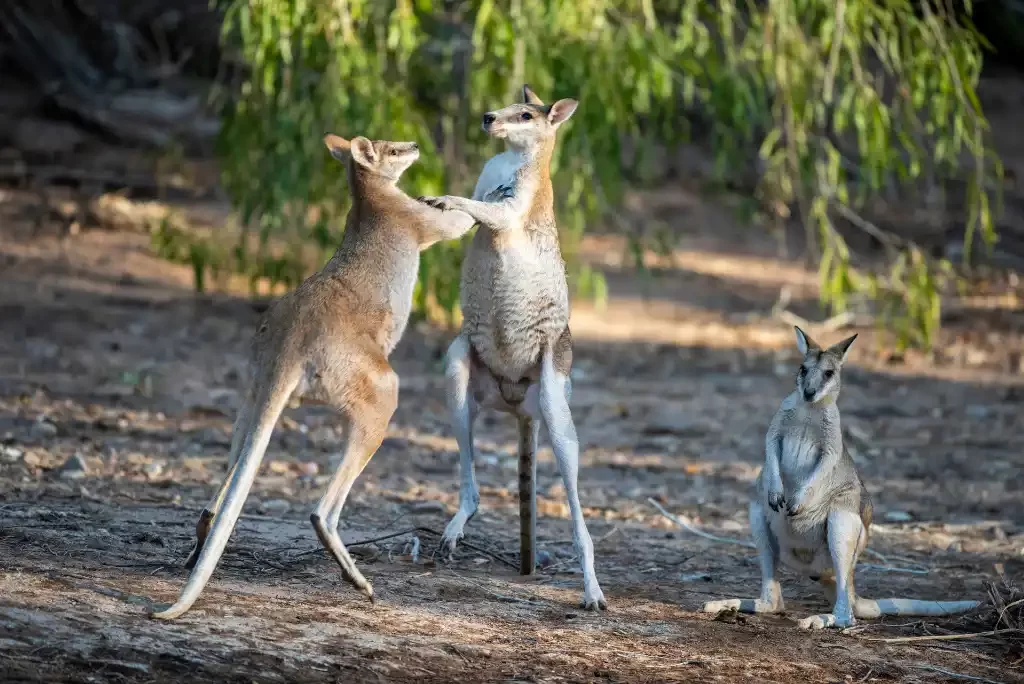
The Agile wallaby (Macropus agilis) is a diurnal and social animal that is found in a diverse array of habitats throughout northern and eastern Australia, including Tasmania. Here are some key points about its behavior and lifestyle:
- Agile wallabies are highly agile and able to jump up to three times their body length, which helps them escape predators and navigate through their habitat.
- They are also able swimmers and may cross waterways to access food or escape predators.
- Agile wallabies are primarily herbivores, and their diet consists of a variety of grasses, herbs, and shrubs, depending on the habitat and season. They have a unique digestive system that allows them to extract maximum nutrition from their food, even in environments with low-quality vegetation.
- The social structure of Agile wallabies is dynamic, and individuals may switch groups or associate with multiple mobs, depending on factors such as food availability and social dynamics. They communicate with each other through a variety of vocalizations and body language.
- During mating season, males may become more aggressive and compete with each other for the opportunity to mate with females. After a gestation period of around a month, females give birth to a single offspring, called a joey, which they carry in their pouches for several months. Joeys remain dependent on their mothers for several months before becoming fully independent.
- Agile wallabies have a unique breeding system called embryonic diapause, where females can delay the implantation of a fertilized egg until environmental conditions are favorable for raising a young. This allows them to optimize their reproductive success in variable or unpredictable environments.
- They may also exhibit a behavior called communal nesting, where several females share a communal den and care for each other’s joeys, which helps them conserve energy and protect their young from predators.
- Agile wallabies may also engage in grooming behavior, where they clean and maintain each other’s fur, which may help them regulate body temperature and social bonds within the group.
- Finally, Agile wallabies may have a positive impact on their environment, as their grazing and browsing behavior can help maintain vegetation diversity and reduce the risk of wildfires in certain habitats.
Agile Wallabies: Diet, Feeding Behavior, and Nutritional Adaptations
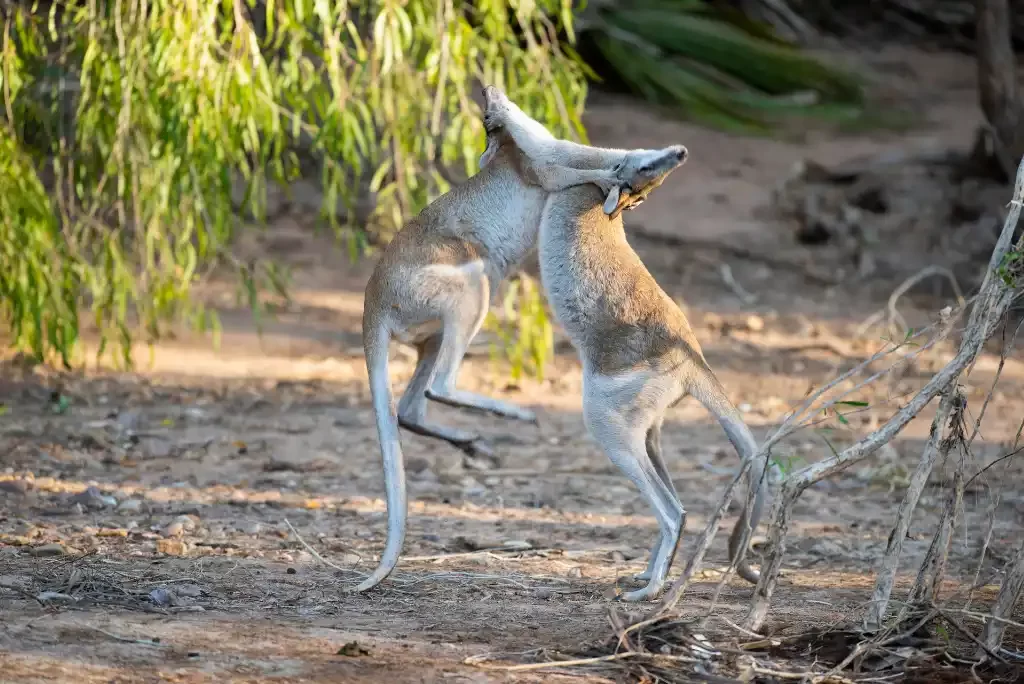
Dietary Composition
The Agile wallaby (Macropus agilis) is a herbivorous marsupial with a diverse and varied diet. They consume a wide range of plant materials to meet their nutritional needs.
Grasses, including both short and tall species, form a significant portion of their diet. Agile wallabies graze on different types of grasses, taking advantage of the nutritional diversity available.
They also incorporate various herbs into their diet, which provide additional nutrients and flavors. Leaves from shrubs and trees are another essential component of their diet, offering them a source of vitamins and minerals.
Additionally, Agile wallabies opportunistically feed on tender shoots and seasonal fruits when available, adding variety to their diet and fulfilling their dietary requirements.
Feeding Behavior: Selective Grazing
Agile wallabies exhibit selective grazing behavior, which allows them to choose plants with higher nutritional value.
They possess specialized sensory abilities to detect and identify preferred plant species. They rely on factors such as aroma, texture, and taste to determine the quality of the vegetation they consume. By selectively grazing on nutrient-rich plants, Agile wallabies optimize their nutrient intake, ensuring they obtain the essential vitamins, minerals, and fiber necessary for their overall health and well-being.
Seasonal Adaptations
Agile wallabies are adaptable in their feeding behavior and diet to cope with seasonal changes in food availability. During periods of abundance, such as the wet season, they have access to a wider variety of plant resources.
They may focus on consuming highly nutritious grasses and herbs that flourish during this time. However, in times of drought or food scarcity, Agile wallabies employ behavioral flexibility and adjust their diet accordingly.
They may consume a broader range of plant species, including less preferred plants, and rely on browsing shrubs and trees to sustain themselves when the availability of preferred grazing plants is limited.
Nutritional Adaptations
Foregut Fermentation: Agile wallabies possess a specialized digestive system known as foregut fermentation. Within their enlarged foregut, microbial fermentation takes place, enabling them to break down cellulose, a complex carbohydrate found in plant cell walls.
This fermentation process allows Agile wallabies to extract essential nutrients, such as volatile fatty acids, from fibrous plant material that would otherwise be indigestible.
The byproducts of this fermentation provide a significant portion of their energy requirements and contribute to their overall nutritional intake.
Efficient Water Conservation
Water conservation is critical for the survival of Agile wallabies, particularly in their natural habitats, which often include arid and semi-arid regions. Agile wallabies possess adaptations that help them minimize water loss and optimize water conservation.
Their highly efficient renal system allows for the reabsorption of water from urine, reducing water loss through excretion.
This adaptation enables Agile wallabies to survive with lower water intake compared to many other mammals, making them well-suited for water-limited environments. Additionally, they can obtain some water from the vegetation they consume, further supporting their water balance.
Foraging Strategies
Agile wallabies employ various foraging strategies to optimize their food acquisition and minimize energy expenditure. They utilize their strong hind legs and agility to navigate through their habitat, enabling them to access different feeding areas efficiently.
They may browse on low-lying vegetation, such as low shrubs and grasses, which allows them to utilize resources close to the ground. In open areas, Agile wallabies engage in grazing behavior, selectively consuming grasses that provide the most nutrition.
They can adapt their foraging behavior based on the density and composition of vegetation, enabling them to selectively feed on preferred plant species when vegetation is more abundant and diverse.
This versatility in foraging strategies allows Agile wallabies to effectively exploit available food resources in their environment, ensuring their nutritional needs are met across varying landscapes and seasons.
Agile wallaby Ecosystem Roles
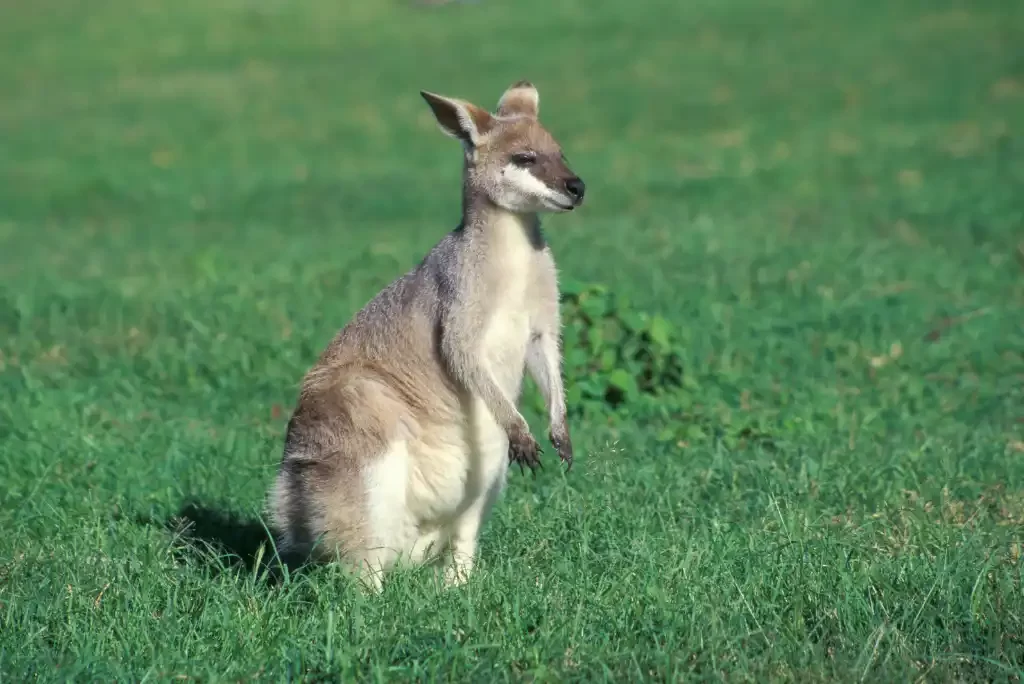
As a herbivorous marsupial, the Agile wallaby plays an important role in the ecosystems where it is found. Here are some of the ecosystem roles of the Agile wallaby:
Seed dispersal:
Agile wallabies consume a variety of plant material, including seeds. As they move through their environment and excrete seeds, they help to disperse plant species and promote genetic diversity within their ecosystems.
Grazing:
By consuming grasses and other plants, Agile wallabies can help maintain healthy vegetation in their habitats. This can have a cascading effect on other species, as healthy vegetation provides habitat and food for a wide variety of other animals.
Prey:
Agile wallabies are preyed upon by a range of predators, including dingoes, foxes, and feral cats. By serving as prey for these predators, they play an important role in maintaining predator-prey relationships and supporting healthy predator populations.
Nutrient cycling:
As Agile wallabies consume plant material and excrete waste, they contribute to nutrient cycling within their ecosystems. Their waste provides nutrients to the soil, which can support plant growth and contribute to the health of the ecosystem as a whole.
The Agile wallaby is an important species within the ecosystems where it is found, contributing to a range of ecosystem functions and supporting the overall health and diversity of its habitat.
Related animals
Agile wallabies FAQ’s
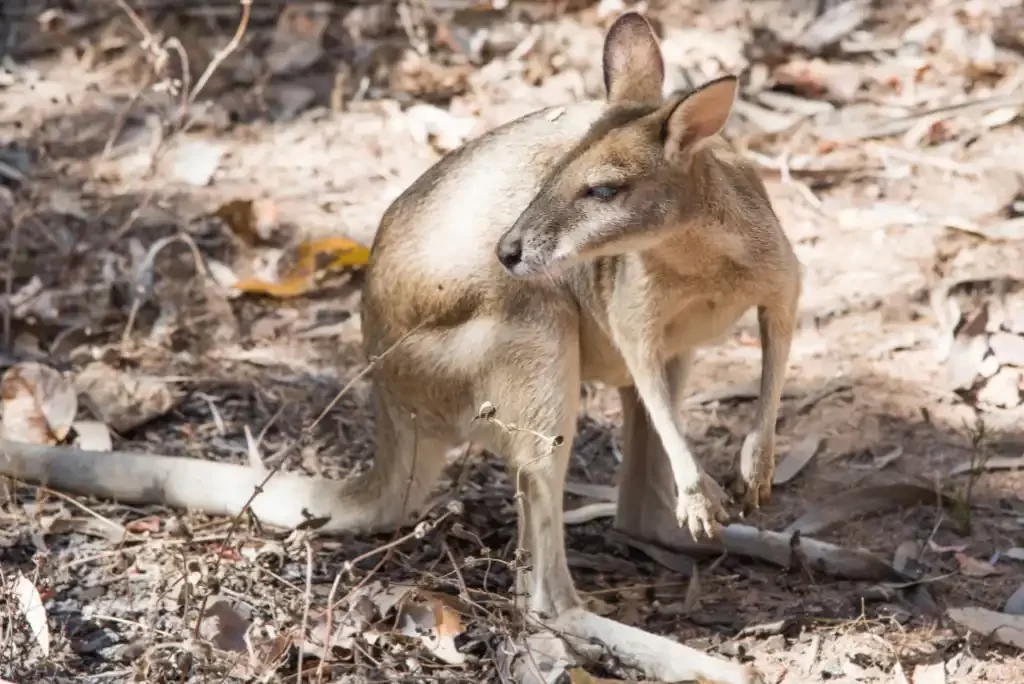
What is an Agile wallaby?
An Agile wallaby is a small to medium-sized marsupial found in northern and eastern Australia. They are known for their agility and ability to jump up to three times their body length.
What do Agile wallabies eat?
Agile wallabies are primarily herbivores, and their diet consists of a variety of grasses, herbs, and shrubs, depending on the habitat and season. They have a unique digestive system that allows them to extract maximum nutrition from their food, even in environments with low-quality vegetation.
How do Agile wallabies communicate?
Agile wallabies communicate with each other through a variety of vocalizations and body language. They may use a range of calls, such as grunts, hisses, and clicking sounds, to signal danger, express dominance, or communicate with their young.
Are Agile wallabies social animals?
Yes, Agile wallabies are social animals and may live in groups called mobs. The social structure of Agile wallabies is dynamic, and individuals may switch groups or associate with multiple mobs, depending on factors such as food availability and social dynamics.
Where can Agile wallabies be found?
Agile wallabies are found in a diverse array of habitats throughout northern and eastern Australia, including Tasmania. They prefer areas with a mix of grasses and shrubs, as well as access to water sources.
Are Agile wallabies endangered?
Agile wallabies are listed as a species of least concern by the International Union for Conservation of Nature (IUCN). However, they may be impacted by habitat loss and fragmentation, as well as hunting and predation by introduced species such as foxes and feral cats.



